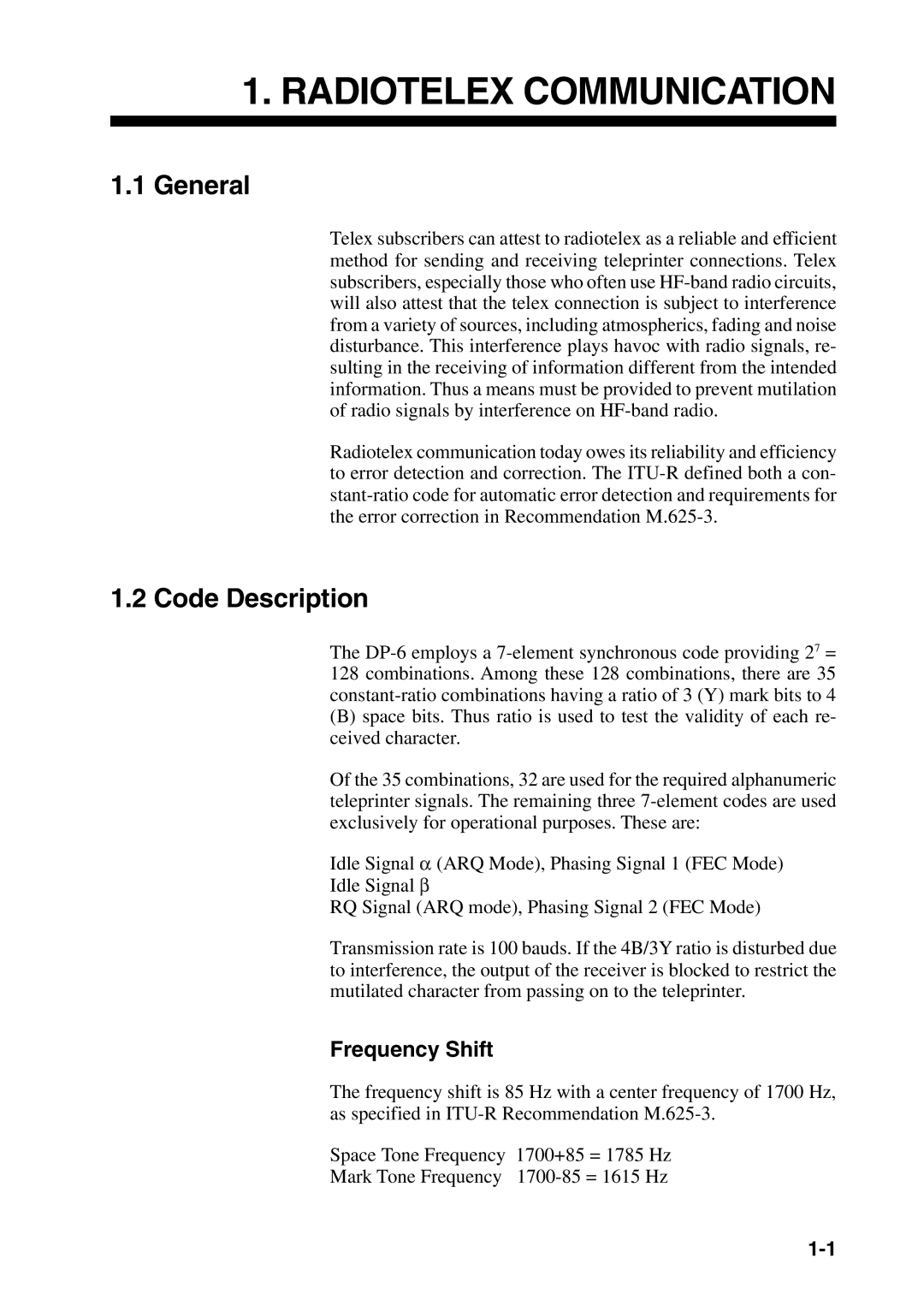
1.RADIOTELEX COMMUNICATION
1.1General
Telex subscribers can attest to radiotelex as a reliable and efficient method for sending and receiving teleprinter connections. Telex subscribers, especially those who often use
Radiotelex communication today owes its reliability and efficiency to error detection and correction. The
1.2 Code Description
The
(B)space bits. Thus ratio is used to test the validity of each re- ceived character.
Of the 35 combinations, 32 are used for the required alphanumeric teleprinter signals. The remaining three
Idle Signal | (ARQ Mode), Phasing Signal 1 (FEC Mode) |
Idle Signal |
|
RQ Signal (ARQ mode), Phasing Signal 2 (FEC Mode)
Transmission rate is 100 bauds. If the 4B/3Y ratio is disturbed due to interference, the output of the receiver is blocked to restrict the mutilated character from passing on to the teleprinter.
Frequency Shift
The frequency shift is 85 Hz with a center frequency of 1700 Hz, as specified in
Space Tone Frequency 1700+85 = 1785 Hz
Mark Tone Frequency
